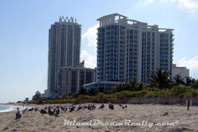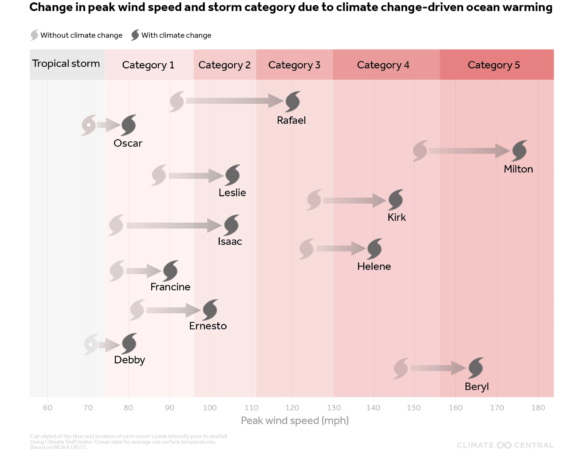Miami Beach is running out of sand.
By Amy Green, Correspondent of The Christian Science Monitor
Troublesome, because it’s a community that draws its very life from the stuff.
The city and its famous strip, South Beach, thrive off the sunbathers who come from across the globe to spread their towels and lie upon the coarse granules laden with seashell – generating $4.2 billion annually from tourism. The sand also protects the community from the pounding waves of hurricanes.
For 30 years the city has replenished its beaches with sand from offshore sources, pumping it directly from the ocean floor. But these sources are thinning, and the process is complicated by three sensitive coral reefs that run parallel to the coastline. Consequently, local leaders must look elsewhere for sand.
Just taking the sand from elsewhere, they’ve learned, is not a neighborly thing to do. They sparked controversy last year when they sought sand offshore from St. Lucie County, some 120 miles up the East Coast. Residents there accused Miami Beach of plotting to rob them of sand.
So now they are eyeing sandy shores across the sea.
Miami Beach leaders are turning toward foreign sources such as the Bahamas. They’ve received offers from the Dominican Republic, the Turks and Caicos Islands, and Mexico. In the Dominican Republic, for example, a fish farm offered to sell Miami Beach sand from newly dug fish ponds.
But there’s a problem: Federal law prevents Miami Beach from considering foreign sources until a domestic search is exhausted. So local leaders and the US Army Corps of Engineers have drafted a report summarizing their far-reaching effort. They hope for approval later this year to begin importing foreign sand, said Brian Flynn, an administrator in the Miami-Dade Department of Environmental Resources Management.
"If we have one more hurricane we’re going to need an external source," he said. "We’re the first county that’s essentially run out of sand. Broward County to our north is right behind us. They’ve probably got one more project, and they’re going to be out."
Other coastal communities are bracing for the same, as hurricanes, rising ocean levels, and other forces combine to erode beaches even as they assume cornerstone roles in local and state economies. Communities in southern California and Hawaii also are facing similar shortages, said Charley Chesnutt, a coastal engineer for the Institute for Water Resources, a research organization of the US Army Corps of Engineers.
It’s not that sand is a diminishing resource, but that its distribution is uneven, an unfortunate habit of nature for communities like Miami Beach. The costly challenge is getting sand to match a beach, granules that are the same size and color.
"There was a shortage before, but the beaches have become much more valuable in terms of their recreational amenities," says Bob Dean, professor emeritus in the department of civil and coastal engineering at the University of Florida. "Sand quality and sand availability are certainly going to become a problem."
Communities are willing to spare virtually no cost to revitalize beaches. Studies show they get back $7 for every $1 invested through tourist activity and other benefits, Dean says. Property values rise, and schools are the biggest beneficiaries as property tax collections grow. Meanwhile beaches absorb wave energy during hurricanes and other turbulent storms, mitigating property damage.
In Florida the state appropriates $30 million annually for beach renourishment, and with federal and local funding the amount balloons to $90 million, Dean said. In response to last year’s dispute between Miami Beach and St. Lucie County and to moderate any others that might arise, state Sen. Dennis L. Jones introduced legislation calling for a public inventory of all offshore sand sources. The idea is to prevent surprises when one community moves toward an offshore source beyond its own borders. The measure passed this spring as an amendment to another bill.
"This is going to be happening all over the state," says Senator Jones, a Republican representing western Pinellas County, including Clearwater and St. Pete Beach on Florida’s West Coast. "Just like we used to have water wars, realistically we could have sand wars because some areas have sand and some don’t."
Since the 1990s Miami Beach has braced for a sand shortage. Local leaders organized workshops to brainstorm solutions and then considered trucking sand from Central Florida but found the process too costly and logistically unworkable. They approached Palm Beach County about an offshore source there but ran into the same political opposition they faced in St. Lucie County. Now they believe they’ll face opposition virtually anywhere they look domestically.
Importing foreign sand is tricky, too. Miami Beach competes with the Bahamas for the same tourists. The city plans to avoid that problem by soliciting bids from dredging companies, giving them the responsibility of locating sand. Already the city is building rock structures to hold sand in place and organizing a plan to move sand from local beaches where it’s plentiful to beaches that need it. It’s worth the effort, Flynn said. The Army Corps of Engineers found that the beaches prevented $20 million in property damage during hurricane Andrew in 1992.
"People are starting to realize sand is a finite resource," he said. "People just don’t want us to come up there and get their sand; quite frankly I can’t blame them."
Taken from the original article.









